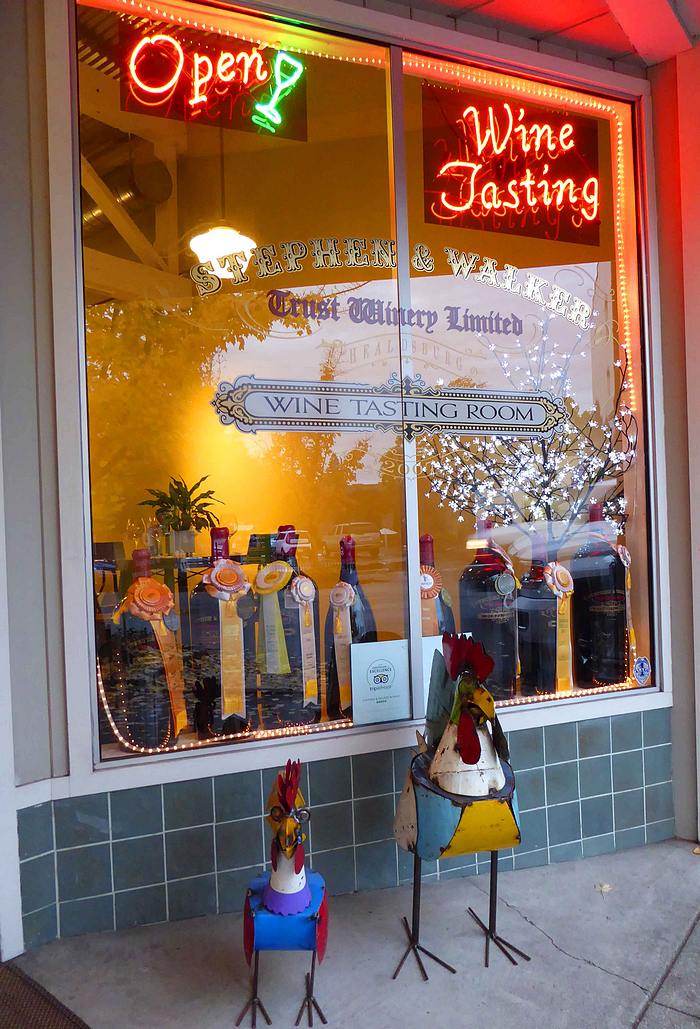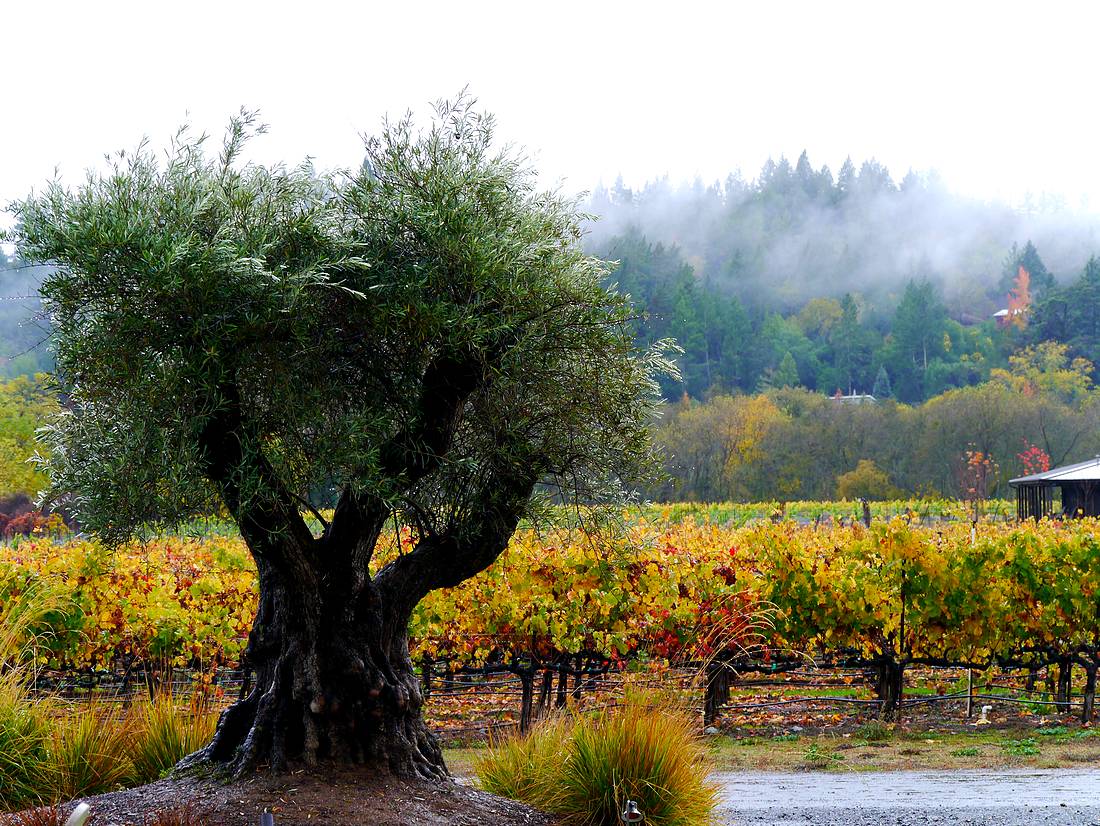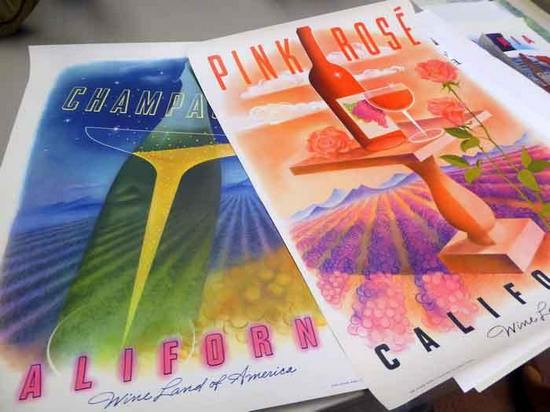We had planned to visit Healdsburg in California’s Sonoma County long before the terrible wine country wildfires broke out in early October. We settled on the town because it sits at the junction of the Russian River Valley, the Alexander Valley, and the Dry Creek Valley wine regions. Among them, they produce some of California’s leading Zinfandel, Pinot Noir, and Sauvignon Blanc. The Russian River Valley subregion of Chalk Hill is also famed for its Chardonnay. And where there’s good wine, there’s also good food.
After seeing the dramatic news coverage of the wildfires, we considered canceling. But prevailing winds spared most of the area around Healdsburg while scorching other parts of Sonoma and Napa. Healdsburg pitched in by housing and feeding the firefighters who finally got the blazes under control. Lodgings also gave temporary shelter to some of the people who lost their homes.
The vast majority of Northern California wineries received little or no damage. The photo at the top of this post shows some post-harvest vineyards and a pre-harvest olive tree. (That’s morning fog hovering over the Dry Creek Valley—not smoke.) Around Healdsburg, nearly 98 percent of the grapes were picked before the fires began.
We decided to go, and saw only a little fire damage on hilltops during the 70-mile ride north from San Francisco airport. As we explored the countryside around the town, we encountered one lush vineyard after another with big healthy leaves changing colors. The spectacle gives our New England fall foliage a run for its money. The vineyards, by the way, helped save the region from even worse damage by acting as firebreaks.
Healdsburg is wine central
Centered around a green town square with a cute gazebo, the town of Healdsburg makes a rich base to explore wine country. As the vintage posters at the Sonoma County Wine Library (139 Piper St., Healdsburg, 707-433-3772, ext 0416) above indicate, California has long been the “Wine Land of America.” But the posters also hark back to an era of generic blended wines—long before the California specialization in high-grade varietal wines. And they certainly predate the marketing of Sonoma County wines with their specific geographic areas noted on the bottle.
 Because it lies at the convergence of so many different wine terroirs, Healdsburg is practically an open-air enoteca of Northern California wine. If your principal interest is a quick education in the potential of the Russian River, Alexander, and Dry Creek AVAs (American Viticultural Areas), you can park your car at one of the inns, B&Bs, or hotels and explore on foot. There are more than 20 winery tasting rooms in the blocks immediately surrounding the town square. Branch out a little and you’ll find another dozen or so within walking distance.
Because it lies at the convergence of so many different wine terroirs, Healdsburg is practically an open-air enoteca of Northern California wine. If your principal interest is a quick education in the potential of the Russian River, Alexander, and Dry Creek AVAs (American Viticultural Areas), you can park your car at one of the inns, B&Bs, or hotels and explore on foot. There are more than 20 winery tasting rooms in the blocks immediately surrounding the town square. Branch out a little and you’ll find another dozen or so within walking distance.
We sampled some of the wineries in the surrounding countryside and had some great meals in town. Over the next few weeks, we’ll be reporting on Healdsburg as a wine tourism destination. Stay tuned.
For details on attractions and lodging in the town, visit www.Healdsburg.com.


